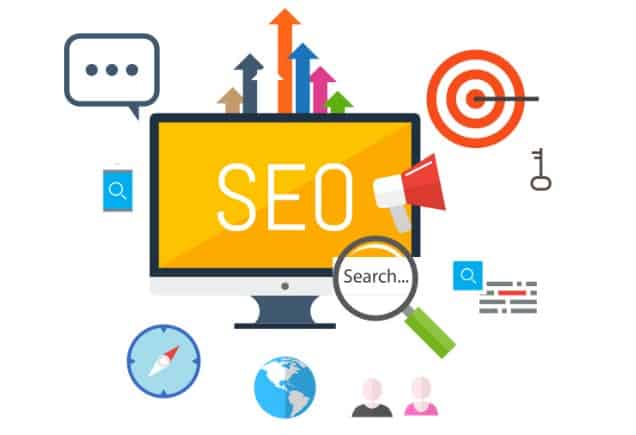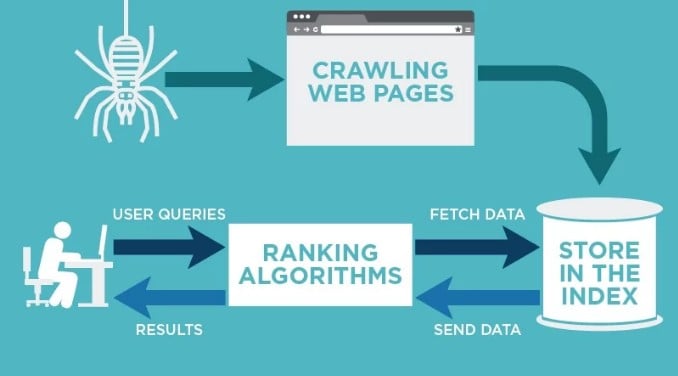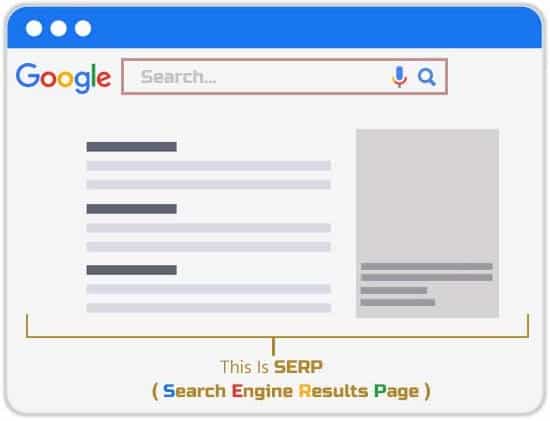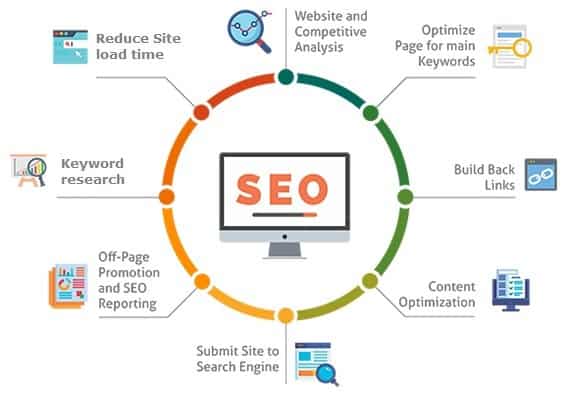
What is search engine optimization (SEO)? Have you ever wondered that despite having great content on your website, you do not get enough traffic? Why does a search engine like Google does not show your site when searched for information which is already present on your website? People visit your site still why you are not getting enough business conversion?
The simple answer to the above questions is that your website needs SEO. SEO helps in increasing the quality and quantity of organic traffic to your site. We need to understand search engine working and why do we need SEO before we know the SEO process itself.
How does a search engine work?
A search engine is a software that searches your search keywords in all the content which is available on the internet. Search engines evaluate billions of material available on the internet like web pages, images, PDFs, videos, etc. and assess them on many factors in advance by “crawling” and “indexing” process. They also order them based on the relevance to the queries by “ranking” process. In short, these three processes prepare a catalog by discovering the content on the internet. These help search engines to return the most relevant results for someone’s query in a short time.


Understand search engine results pages (SERP):
We also need to understand search engine results pages (SERP). Below are the few features of SERP –
- featured snippets (an organic result that displays an answer inside a box),
- People Also Ask boxes,
- Image carousels, etc.
Few SERP features on Google are organic and can be the right areas for better SEO. These include featured snippets and related questions (a.k.a. “People Also Ask” boxes).
Know what type of content People is searching for?
You need to understand the answer to following to understand questions that people are searching and solution content that you are providing –
- What are the things that people are searching for?
- What are the keywords that people are using for online searches?
- How many people are searching for that keyword?
- What answers are they trying to find or expecting?
- What type of content do they wish to consume?
Why do you need Search Engine Optimization?
You need to understand your website goals mean what you will do when you get more traffic. Also, know your user’s needs. It gives more insight into focusing on the right area for SEO. It would help if you also determined factors (Key Performance Indicators) to measure improvement after SEO on your website. Below are a few examples of KPI of SEO –
- Sales
- Downloads
- Email signups
- Contact form submissions
- Phone calls
You can also define additional KPIs for your Google My Business listings:
- Clicks-to-call
- Clicks-to-website
- Clicks-for-driving-directions
It would be best if you made your goals specific and measurable.
How to do SEO without spending money?
Keyword research (Analyze Keywords):
You might be an expert in your field and can right excellent content, but you should also understand what content people are searching for? It would help if you found the right intersection between your content and what content people are searching for. In your article, you need to include words that are most searched by people. You can use Keyword research tools like “Google word planner” or “UberSuggest.”
You should check below parameters for choosing the right keywords:
- higher volume – Search volumes mean how many times a keyword was part of the search.
- high CPC (Cost per Click)
- SEO difficulty (SD) score under 40
You should always target information and transactional keywords to increase traffic and convert them to business.
Content Optimization:
Add statistics Content: You should add statistics to your content. “www.statista.com,” “www.ibisworld.com ,” “www.helgilibrary.com” are great websites for it.
Add Visual Content: You can use visual content to tell your story like charts, videos, graphics, etc. You can use www.canva.com. Use Alt text (alternative text) within images for web accessibility, and it describes “images” to the visually impaired via screen readers.
Avoid Duplicate or Copied content: Your content should be original and plagiarism free.
Reduce Site Load Time:
It would be best if you worked to make your site faster. You can use a responsive design for your website so that it renders on any device smoothly. You can use Google’s “Lighthouse tool” for measuring the performance of your website. You should compress the images which you use on your website. Use GIF format for Animations and JPEG for images. You can use a PNG format for pictures if you want to preserve image resolution.
Submit Site to Google Search engine using Google search console:
Google search console is the best place to check if a particular page is indexed or not. If not, you can request indexing on it. It also gives you a report of web pages that are having errors and opportunities for optimization.
Build Right Back Links:
When a web page links to another page, it is known as backlinking. When a webpage links to any of your articles or your website’s homepage, it passes “link juice.” This link juice helps with the better ranking of the material and improves your domain authority in search engines. If many backlinks are coming into your website, but if they are from only one domain, then they will be considered as one linked root domain. Backlinking should happen from different and unique domains. It also helps search engine bots to find new web pages from backlinks of existing pages. It helps in fast indexing.
Build your social media network:
It would help if you were actively promoting your content on social networks. More times, your link gets shared; more are the chances of getting it ranked high?
MetaData:
Configure appropriate Meta description and title will help search engines.
Google Analytics:
Enable Google Analytics on your website and check more details about users visiting our website. Some of the features are country, gender, age group, etc. These are helpful to understand the trend and decide basic appropriate word usage on pages.
Conclusion:
In this article, we covered some basics of SEO and briefly covered how to achieve it. SEO is a vast topic, and mastering, it needs some patience and continuous improvement. If the implementation is correct, then it will give you bonus traffic over time. I will cover each of these in more detail in the subsequent articles.















































